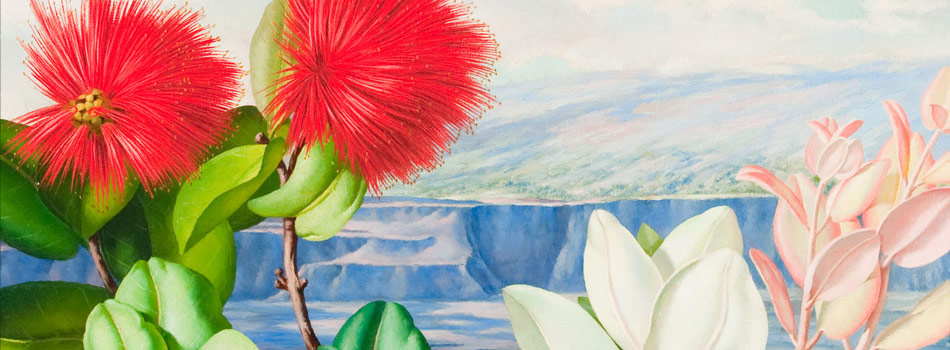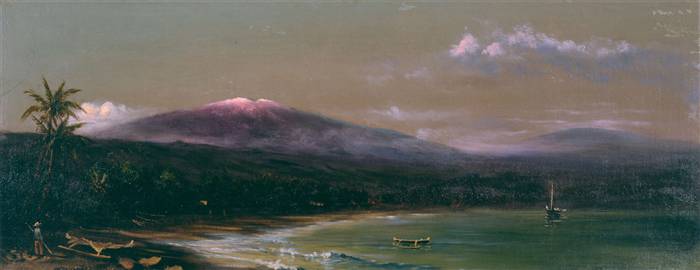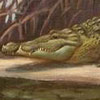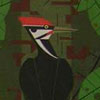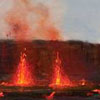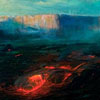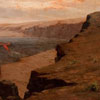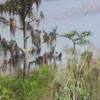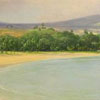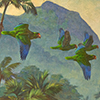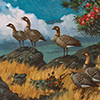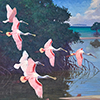Views of Paradise
"... We rejoice that (the artist), has become so charmed with the contemplation of the scenery, that he is endeavouring to transfer some of its beauties to the canvas..." Reverend S.C. Damon, Seaman's Chaplain of Honolulu, 1867
Tropical landscapes are among the rarest of American landscapes. Many plants and animal species found their way across the Pacific to produce a unique and complex Hawaiian ecosystem. Marshes, swamps, tropical forests and waterfalls, as well as coastal dunes and fiery volcanoes, have long been alluring to artists who sought to capture the spectacular and unfamiliar beauty of these special places. The endless beaches and shallow lagoons of glinting water, fertile lands bound by fronded palm trees, and unusual and vibrantly colored flora were inspirational.
More...
Eruptions of Kilauea and Mauna Loa produced fiery fountains and rivers of molten lava that, over time, created a volcanic landscape. An art movement known as the Volcano School (1880–1890) emerged in response to the growing interest in documenting the dramatic natural occurrences of volcanic eruptions that were frequent during this period. Many of the painters of the Volcano School painted other Hawaiian subjects, including landscapes of the island. Sketches and paintings of volcanic eruptions were extremely popular and highly collectible. They also did much to enhance tourism to the island.
Florida’s varied habitats, meanwhile, include mangrove swamps and rich marine estuaries that support an abundant diversity of wildlife. The wildlife artist captured the alligator lying still in the intense heat of the humid day. Bright and closely observed birds on land and in flight against the intense aquamarine and cobalt skies are framed by tropical vegetation. Water is ever present in the depictions of the grey-green wetlands, creeks, and backwaters of the mangrove swamps.
These magnificent views of paradise are preserved and protected by the National Park Service and continue to inspire artists and visitors.
